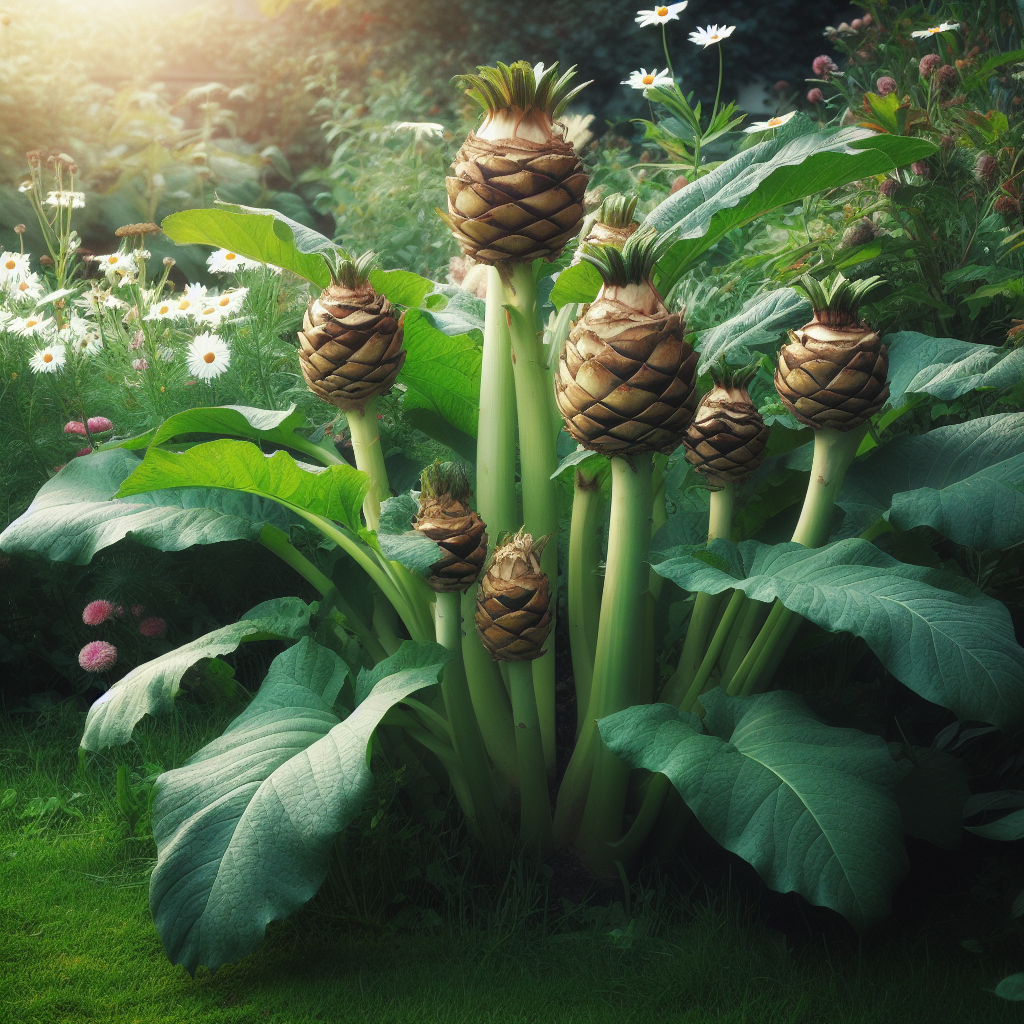Enter the world of Helianthus tuberosus, commonly known as Jerusalem Artichoke or Sunchoke, a resilient and productive addition to your garden. In this guide tailored for hobbyist gardeners, we’ll explore the fascinating characteristics, uses, and cultivation tips for this hardy perennial.
Botanical Overview
- Botanical Name: Helianthus tuberosus
- Common Names: Jerusalem Artichoke, Sunchoke, Topinambour
- Family: Asteraceae, the daisy family
Plant Description
Jerusalem artichoke stands tall as a hardy, herbaceous perennial, reaching heights of up to 3 meters, crowned with vibrant yellow flowers reminiscent of sunflowers. Thriving in various soils, it particularly favors light, sandy soil with good fertility. While it performs exceptionally well in temperate climates, adapting even to the point of becoming an “edible weed,” it demands replanting in warmer, more humid regions. In tropical zones, strategic planting during the wet season ensures successful growth.
Uses
- Nutrient-Packed Tubers: Jerusalem artichokes produce numerous edible tubers. Unique in their composition, these tubers are an excellent choice for diabetics as they contain inulin and laevulin instead of starch.
- Culinary Delight: Tubers, with a scrub-not-peel approach, can be boiled, baked, or even grated raw for salads. Their versatility in the kitchen makes them a valuable addition to various dishes.
- Natural Windbreak: The tall stems of Jerusalem artichoke make it an effective summer windbreak for vegetable gardens, offering both function and beauty.
- Forage for Animals: The plant serves as fodder for animals. The tops can be grazed down before harvesting, and pigs, in particular, can root up the tubers for a natural foraging experience.
- Floral Attractiveness: Beyond utility, the attractive flowers can be cut for floral arrangements. Pruning the flowers is believed to enhance tuber yields.
Planting Details
- Propagating Tubers: Propagation is simple through tubers, each section with an ‘eye.’ Ensure proper planting where you want the plant to grow, as leftover tuber fragments might sprout, making eradication challenging.
- Optimal Planting Time: Spring is the recommended planting time. Cut tubers into sections, bury them at a depth of 10 cm, maintaining a row spacing of 70 cm and 25 cm between plants in full sun. Mulch generously.
- Nutrient Needs: Jerusalem artichoke thrives with a good supply of potassium. Wood ash serves as an excellent potassium source, while nitrogen-rich fertilizers should be avoided to prevent excessive foliage growth at the expense of tuber development.
Harvesting Tips
- Timing Matters: Tubers can be harvested 4 to 6 weeks after flowering. Pinching off flower buds can enhance tuber yields.
- Storage Considerations: In cooler areas with well-drained soil, dig tubers as needed. In subtropical regions or poorly drained soils, harvest the entire crop once the tops die back to prevent rot. Tubers don’t store well out of the ground, so ensure proper storage in slightly damp sawdust or sand in a dark place or in the fridge.
A unique gardening experience
Jerusalem artichoke, with its versatility and adaptability, offers hobbyist gardeners a unique gardening experience. From the rich flavors it brings to your kitchen to its role as a natural windbreak and animal forage, this perennial is a multifaceted addition to your garden. Follow the tips in this guide to unlock the potential of Jerusalem artichokes in your gardening endeavors. Embrace the bounty of nutrient-packed tubers and the beauty of sunflower-like blooms as you cultivate this resilient and rewarding plant.
